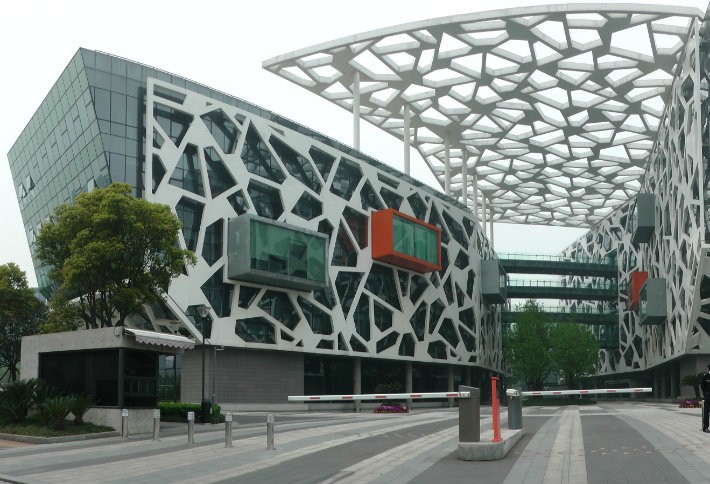The workplace is changing—and with it, the very definition of tenant relationship management. As tenants ask more from their space, the pressure is on building owners and managers to deliver functional space, and an engaging workplace experience. Are you up-to-date on the latest in serving tenants? Answer the questions below to check your knowledge, and then check out this report on tenant relationship management to learn even more.
1
True or False: Office workplaces are becoming denser (fewer square feet per person).

YOU'RE CORRECT!
CoreNet Global projects that average space per office worker will drop to 151 SF by 2017, down from 176 in 2013. But according to a recent BOMA International white paper, this densification is happening unevenly. Large tenants are densifying faster than smaller ones, and even then they are thinking about more than just cost savings. For example, some estimates suggest that for every 2 SF removed from workstation space, 1 SF is added back in the form of shared or public space, designed to enhance collaboration and community.
YOU'RE WRONG!
CoreNet Global projects that average space per office worker will drop to 151 SF by 2017, down from 176 in 2013. But according to a recent BOMA International white paper, this densification is happening unevenly. Large tenants are densifying faster than smaller ones, and even then they are thinking about more than just cost savings. For example, some estimates suggest that for every 2 SF removed from workstation space, 1 SF is added back in the form of shared or public space, designed to enhance collaboration and community.
2
Who at tenant companies do most commercial real estate pros consider to be their “customer"?

B. Primary day-to-day contact
C. Every employee at the building
YOU'RE CORRECT!
According to a recent survey of CRE professionals, 71% believe that primary day-to-day contacts at tenant companies are customers. Another 55% agree that the definition of “customer” includes lease decision-makers. Perhaps surprisingly, however, fully 60% call all tenant employees customers. More than half of them, though, admit that they lack insight into tenant employee sentiment—a huge challenge, given the pressure on building owners and managers to deliver a positive workplace experience.
YOU'RE WRONG!
According to a recent survey of CRE professionals, 71% believe that primary day-to-day contacts at tenant companies are customers. Another 55% agree that the definition of “customer” includes lease decision-makers. Perhaps surprisingly, however, fully 60% call all tenant employees customers. More than half of them, though, admit that they lack insight into tenant employee sentiment—a huge challenge, given the pressure on building owners and managers to deliver a positive workplace experience.
3
What is the most common way building owners and managers measure customer satisfaction?

A. Operational metrics (response time, system “up” time, etc.)
D. Work order feedback system
YOU'RE CORRECT!
Over 60% of CRE professionals say they use annual tenant surveys (whether conducted internally or externally) to measure tenant satisfaction. This approach has flaws, however. Only 48% feel they get feedback from the right person at tenant organizations. Only 47% believe the program is easy to administer. Perhaps most disturbingly, only 39% believe they receive a fair evaluation of the management team’s customer service performance. The industry is ripe for a better solution.
YOU'RE WRONG!
Over 60% of CRE professionals say they use annual tenant surveys (whether conducted internally or externally) to measure tenant satisfaction. This approach has flaws, however. Only 48% feel they get feedback from the right person at tenant organizations. Only 47% believe the program is easy to administer. Perhaps most disturbingly, only 39% believe they receive a fair evaluation of the management team’s customer service performance. The industry is ripe for a better solution.
4
What amenities do CRE professionals believe have the greatest impact on tenant satisfaction?

A. Front desk / lobby personnel
B. Modern communication tools (online work orders, digital signage, etc.)
C. In-building food/retail
D. Shared resources (conference rooms, public spaces, A/V centers, etc.)
YOU'RE CORRECT!
Today’s tenants expect technological adequacy, and that extends to building communication tools. A majority of CRE professionals (54%) are sensing the market’s demand for robust IT infrastructure, from work order management platforms to communication portals to publicly available WiFi.
YOU'RE WRONG!
Today’s tenants expect technological adequacy, and that extends to building communication tools. A majority of CRE professionals (54%) are sensing the market’s demand for robust IT infrastructure, from work order management platforms to communication portals to publicly available WiFi.
5
What is the most common standard for frequency of formal tenant meetings?

YOU'RE CORRECT!
For 28% of CRE professionals, the frequency of formal meetings is driven by tenant-specific factors. In addition to the tenant’s stated preferences, some of these factors include square footage, length of occupancy, service request history and the seniority of the primary tenant point of contact. Flexible communication is a good thing as long as there are protocols in place. Unfortunately, 22% admit to having no defined standard.
YOU'RE WRONG!
For 28% of CRE professionals, the frequency of formal meetings is driven by tenant-specific factors. In addition to the tenant’s stated preferences, some of these factors include square footage, length of occupancy, service request history and the seniority of the primary tenant point of contact. Flexible communication is a good thing as long as there are protocols in place. Unfortunately, 22% admit to having no defined standard.










